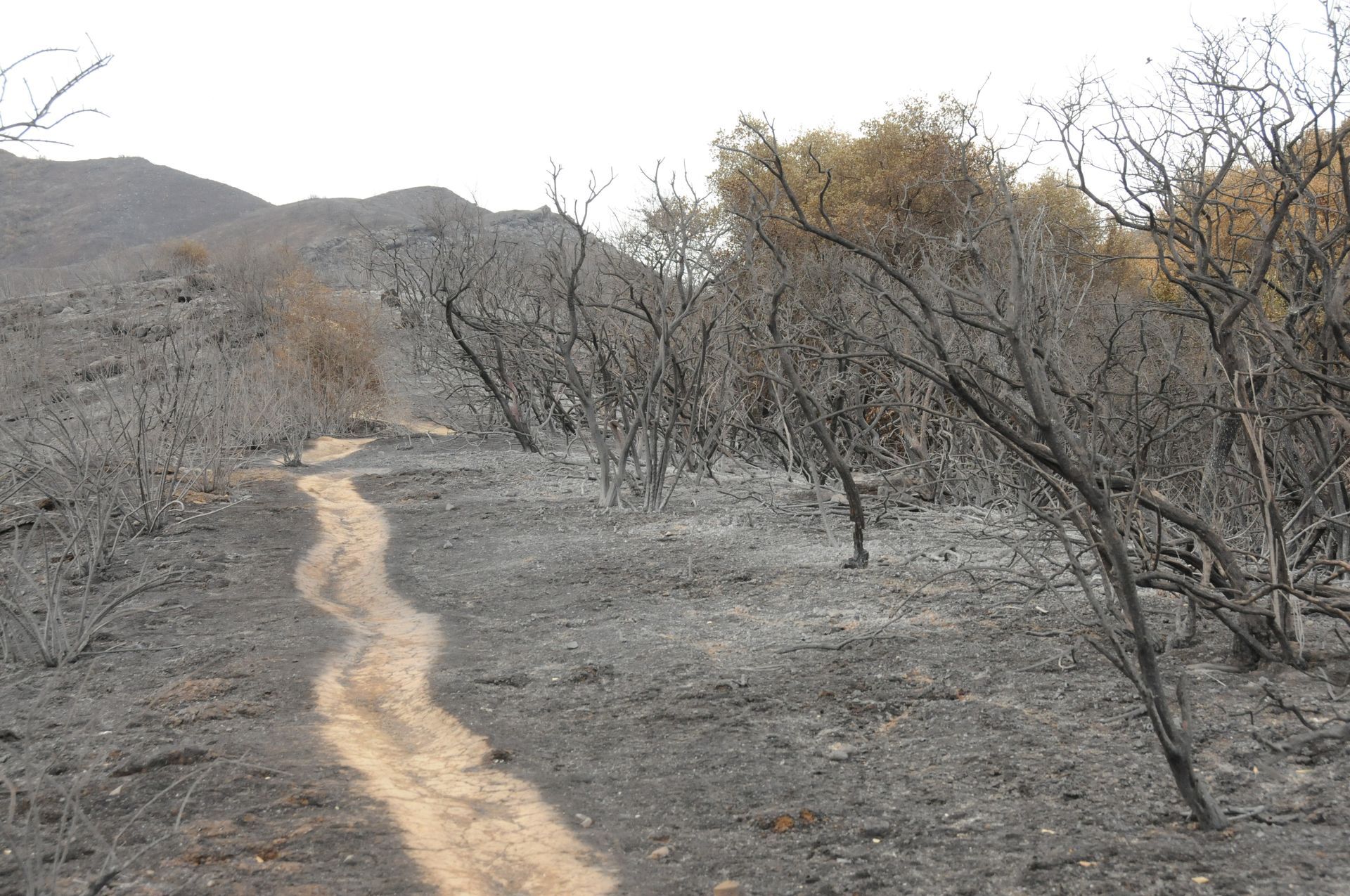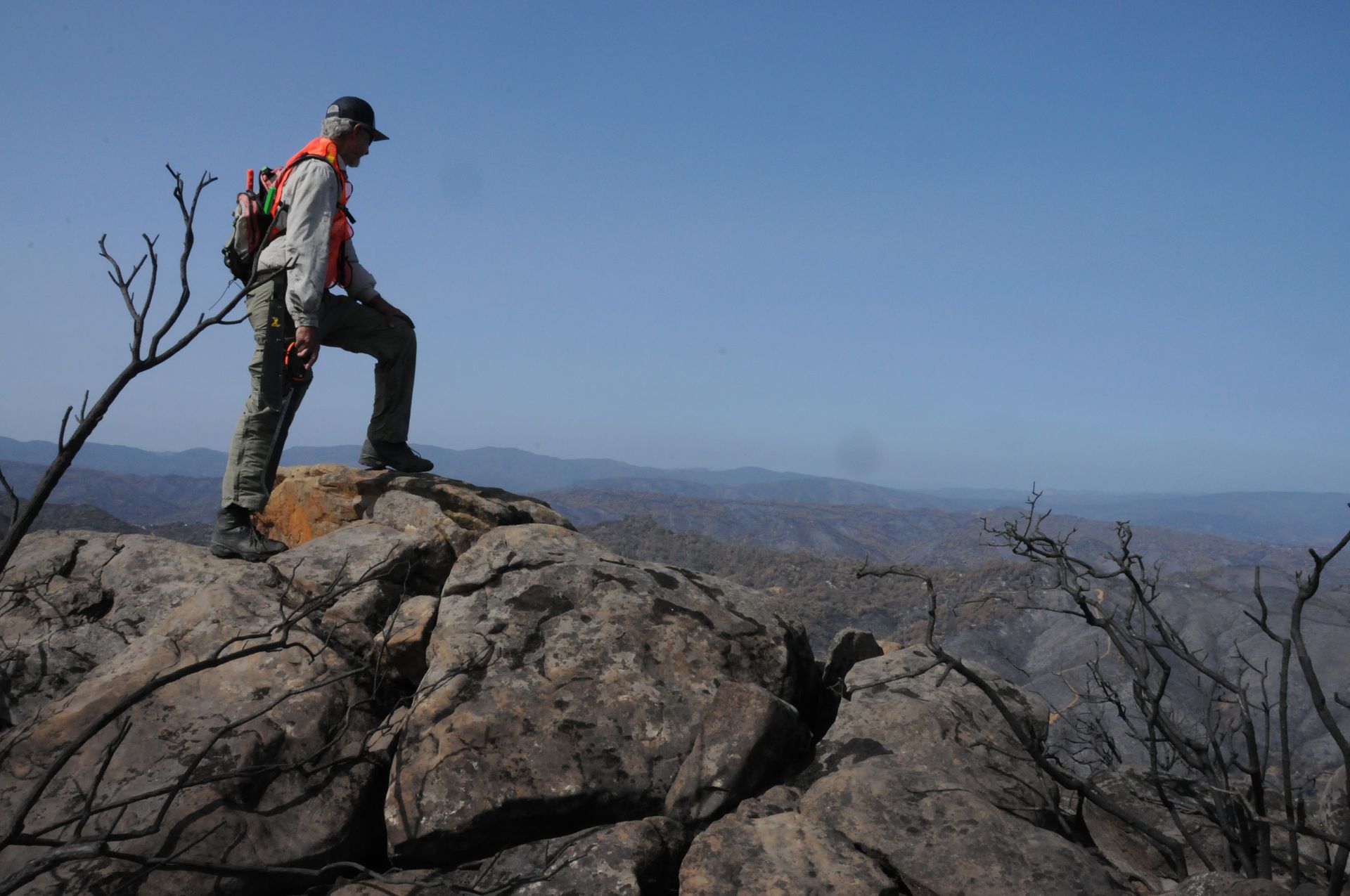May is National Wildfire Awareness Month

Trails can provide some clear space that may help you survive if caught in a wildfire
We all have seen and heard about wildfires - and these events are getting more frequent and much bigger. Defensible space and air quality index are terms that everyone knows and uses. Information is available on how to make our houses and other property as safe as possible during fires. But how should one prepare to enjoy our public lands during wildfire season?
Before heading out on the trail, check the weather forecast and wildfire danger. Although infrequent, thunderstorms do occur in the Berryessa Snow Mountain National Monument region. The LNU Complex Fires of 2020 were started by multiple lightning strikes that started several fires that combined to create the sixth largest fire in California’s history. Social media, weather and fire apps are good resources, but ranger stations and field offices have the most up-to-date information – be sure to check in with the staff there. If the danger is too great, avoid going out on the trail.
If you see smoke while on the trail, stay calm. Take note of the amount of smoke as well as the direction and distance. Get off the trail and to safety as quickly as possible. Getting to safety quickly may require you to leave your gear to lighten your load. When you have reached safety, call 911 to report the fire, even if you think someone else has already reported it.
Move out of the path of the fire – you will not outrun the blaze. Head downhill as much as possible as fires tend to move uphill faster than downhill. Avoid forests or other heavily vegetated areas like chaparral, streamsides, or next to ponds/lakes. Do not shelter in locations that can act as wind tunnels and intensify the heat and flames, like canyons and ravines.

Remember to stay alert on the trail!
In the unlikely event that you are caught in the fire, find a depression in a meadow or open area with a small fuel load. Clear debris and other material away and, if time, dig a small hole for your face. You can also shelter behind large rocks which can block the heat and flames. Sheltering IN streams or lakes is another option, just be sure to move away from of the vegetation next to the water. If the fire overtakes you, stay calm. Lie face down with your feet toward the approaching fire. Cover your face, mouth, and nose with a piece of cloth. Synthetic clothing has a lower melting temperature than natural fibers – remove these if possible.
After the fire has moved on, get to safety as quickly as safely possible. Move away from the fire – moving through a recently burned area generally means that there is less fuel available. Be aware of the dangers – hot areas, spitting embers, and burning trees. The roots of trees may still be burning or have already burned which may create a void underground which could collapse when you step on it.
Whenever you head out on the trail, stay vigilant and aware of your surroundings. Refrain from listening to music so you can hear any possible danger, look up so you can see hazards. Be prepared - know where you are, where you are going, and have escape routes. Make sure that someone (who is not on the trail with you) knows where you are going and when you plan to be back. And make sure to let them know when you have safely returned!
-Nate Lillge; nlillge@tuleyome.org
Adventures and Engagement Director
RECENT ARTICLES






